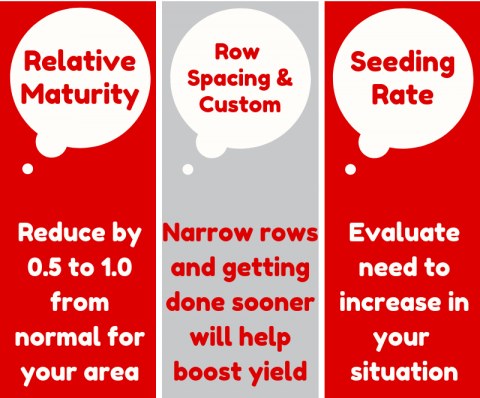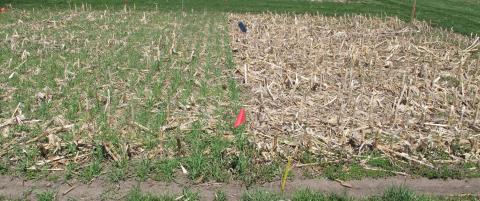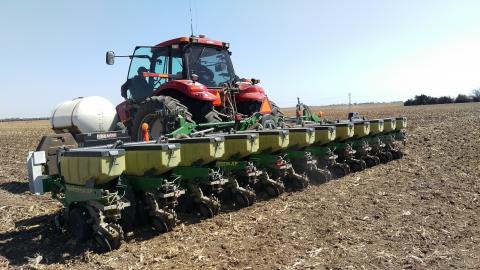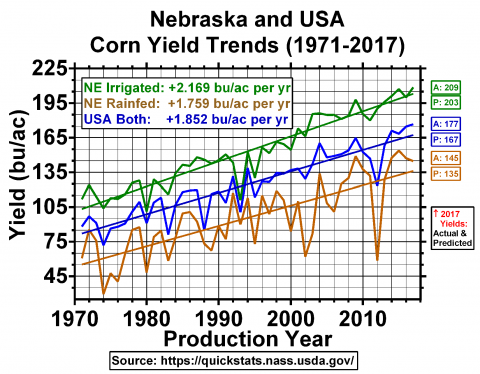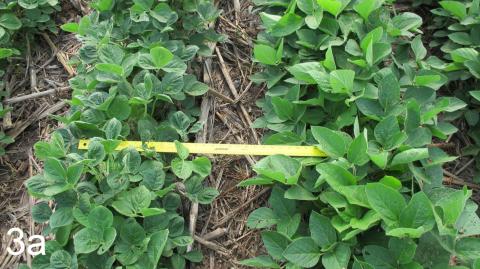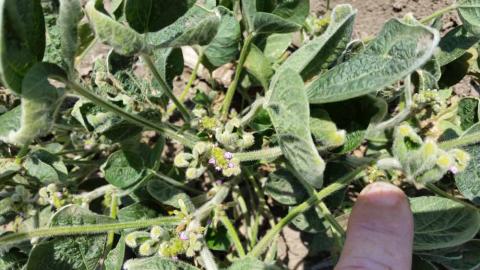Strategies with Delayed Soybean Planting
May 24, 2024
Adjusting soybean planting practices (row spacing, seeding rate and the use of custom planting) and relative maturity of the variety can help maximize yield potential when planting after mid-June.
Considerations when Planting Soybean Early
April 25, 2019
If you're planning to get an early start on your soybean planting, be sure to check for recommended soil temperatures and the forecast for the coming 48 hours to ensure optimal conditions for achieving good emergence.
Corn and Soybean Planting Considerations
April 24, 2019
Planting sets the stage for a successful crop with an even emergence and stand. Consider these tips to help ensure you're providing favorable planting condition via proper soil conditions, planting window, planting depth, and seeding rates.
Soybean and Corn Yield and Acreage Trends
August 15, 2018
Nebraska soybean and corn yields have steadily increased from 1971 to 2017 in both irrigated and rainfed production systems. Nebraska irrigated soybean increased at a linear linear rate of 0.68 bu/ac, and irrigated corn increased at a rate of 2.17 bu/ac.
Field Case Study of Dicamba-Injured Soybeans using Forensic Analysis
August 8, 2018
A field of dicamba-injured soybeans is used as an example to demonstrate the forensic analysis method to determine when dicamba exposure occurred.
Understanding Growth Regulator Herbicide Injury
July 19, 2018
There are now five structurally different growth regulator herbicides, each of which affects plant growth differently. Understanding the differences can help you better identify the cause when you find damage in your field.
Are Your Soybean Plants Exhibiting Dicamba-Induced Leaf Injury?
July 19, 2018
Learn how to examine plant development and use this forensic strategy to determine the approximate calendar date when the plants in your field were likely exposed to dicamba.
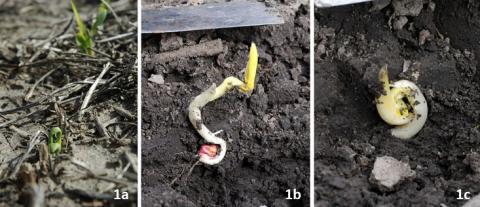
Cold Soil Temperature and Corn Planting Windows
April 12, 2018
With stormy conditions back in the picture, many growers may be concerned about planting corn into cold, wet soils? By checking weather forecasts and soil temperature at planting (in the field and online) and the cold tolerance of seed, growers can identify 48-hour windows of opportunity for planting.
